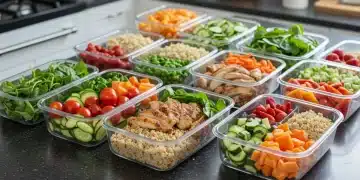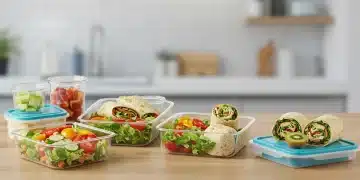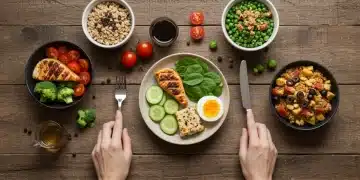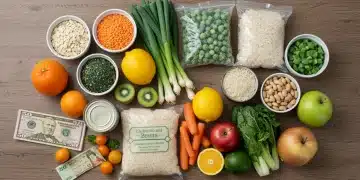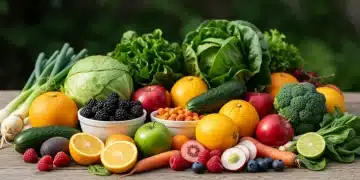Batch Cooking for Weight Management: Your 4-Week Plan
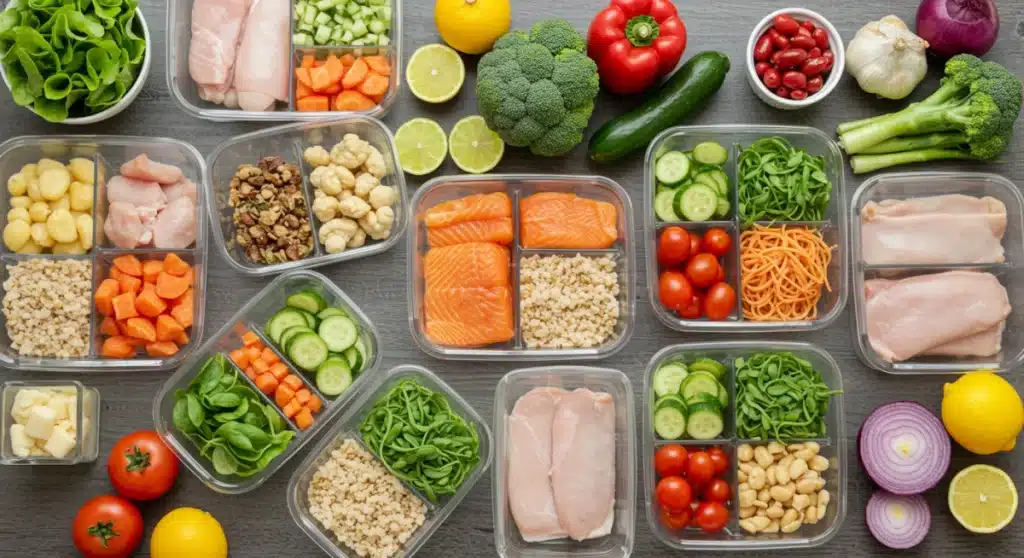
Batch cooking offers a streamlined approach to weight management by allowing individuals to prepare healthy meals in advance, ensuring consistent nutrition and reducing impulsive unhealthy food choices over a 4-week period.
Embarking on a journey towards sustainable weight management often feels like a monumental task, riddled with daily decisions about what to eat. However, a practical solution like batch cooking weight management can transform this challenge into an achievable and even enjoyable routine. This method empowers you to take control of your nutrition, minimize stress, and consistently make healthier choices, paving the way for lasting results.
understanding batch cooking for weight management
Batch cooking is more than just cooking in bulk; it’s a strategic approach to meal preparation that helps you manage your diet effectively, especially when aiming for weight loss. By dedicating a few hours once or twice a week, you can prepare components or entire meals that will sustain you throughout the coming days, eliminating the daily dilemma of what to eat and reducing the temptation for unhealthy alternatives.
This method shines in its ability to support weight management by fostering consistency and portion control. When healthy, pre-portioned meals are readily available, you’re less likely to grab calorie-dense, nutrient-poor options. It also helps in tracking your caloric and macronutrient intake more accurately, which is crucial for achieving specific weight goals.
the core principles of effective batch cooking
- Planning is paramount: Before you even start cooking, plan your meals and snacks for the week. This includes considering your nutritional goals, dietary preferences, and available ingredients.
- Strategic ingredient shopping: Create a detailed shopping list based on your meal plan to avoid impulse buys and ensure you have everything you need.
- Efficient cooking techniques: Utilize cooking methods that allow for large quantities, such as roasting, slow cooking, or pressure cooking.
The beauty of batch cooking lies in its flexibility. You can choose to cook entire meals, prepare individual components like cooked grains or roasted vegetables, or even just chop and store fresh produce. Whatever approach you take, the goal remains the same: to simplify healthy eating and make it a sustainable part of your lifestyle. This initial understanding sets the stage for a successful 4-week plan.
setting up your kitchen for success
A well-organized kitchen is the foundation of an efficient batch cooking routine. Before you dive into a 4-week plan, taking the time to prepare your kitchen space and equip it with the right tools can significantly streamline your process and make the experience more enjoyable. This preparation isn’t about buying expensive gadgets, but rather about optimizing what you have and identifying any practical gaps.
Consider your storage solutions; having an ample supply of airtight containers, preferably glass for durability and ease of cleaning, is crucial. These containers will keep your prepped meals fresh and organized in your refrigerator or freezer. Labeling your containers with dates and contents can also save you time and prevent food waste.
essential tools and storage solutions
- Airtight containers: Invest in a variety of sizes, suitable for individual portions and larger components.
- Quality knives and cutting boards: Sharp knives make prep work faster and safer.
- Large pots and pans: Essential for cooking bigger batches of food.
Beyond physical tools, organizing your pantry and refrigerator is equally important. Group similar items together, keep frequently used ingredients accessible, and ensure older items are at the front to be used first. A tidy and functional kitchen environment reduces stress and makes the entire batch cooking process feel less daunting, encouraging consistency throughout your weight management journey.
week 1: building foundational habits
The first week of your batch cooking weight management plan is all about establishing a solid routine and understanding your body’s needs. This initial phase focuses on simple, versatile recipes that introduce you to the principles of meal prepping without overwhelming you. The goal is to build confidence and create sustainable habits that will carry you through the next three weeks and beyond.
Begin by selecting a few core protein sources, such as grilled chicken breast, baked salmon, or lentils, and prepare them in larger quantities. Alongside these, roast a variety of non-starchy vegetables like broccoli, bell peppers, and zucchini. Cook a batch of a whole grain, such as brown rice or quinoa, to serve as a versatile base for multiple meals. This approach allows for mix-and-match meals, preventing boredom while maintaining nutritional consistency.
sample meal ideas for week 1
- Breakfast: Overnight oats with berries and nuts, pre-portioned and ready to grab.
- Lunch: Quinoa salad with grilled chicken, roasted vegetables, and a light vinaigrette.
- Dinner: Baked salmon with brown rice and steamed green beans.
Focus on portion control during this week. Use measuring cups or a food scale to ensure you’re consuming appropriate amounts for your weight management goals. Reflect on what worked well and what could be improved for the following week. This reflective practice is key to refining your batch cooking strategy and making it truly your own, ensuring you stay on track with your sustainable results.
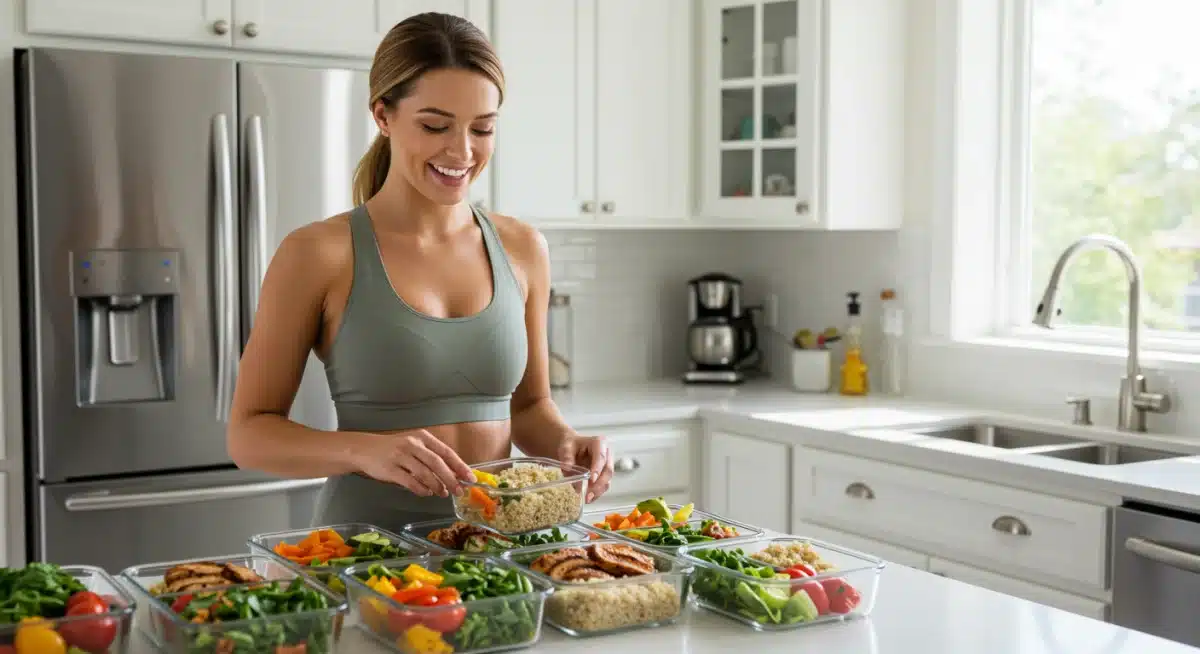
week 2: expanding your recipe repertoire
As you move into week 2 of your batch cooking weight management plan, it’s time to build upon the foundational habits established in week 1. This week focuses on introducing more variety into your meals, exploring new flavors, and experimenting with different preparation methods. The aim is to keep your palate engaged and prevent meal fatigue, which can often derail weight management efforts.
Consider incorporating new lean protein sources like turkey meatballs or lean ground beef, and explore different types of legumes such as black beans or chickpeas. Vary your vegetable choices by adding leafy greens for salads or experimenting with different roasting spices. This is also a good time to try making homemade healthy sauces or dressings in bulk, which can elevate your meals without adding unnecessary calories or unhealthy fats.
introducing new flavors and ingredients
- Try different cuisines: Explore Mediterranean bowls, Asian-inspired stir-fries, or Mexican-style salads.
- Utilize herbs and spices: Experiment with various seasonings to add depth of flavor without extra calories.
- Incorporate healthy fats: Add avocado, nuts, or seeds to your meals for satiety and essential nutrients.
This week also encourages you to refine your time management during your batch cooking session. Perhaps you can multitask by roasting vegetables while a stew simmers, or prep ingredients for the next recipe while another cooks. The goal is to make the process more efficient, allowing you to create a diverse range of meals that support your weight management goals while still fitting into your busy schedule. This expanded repertoire ensures sustained interest.
week 3: optimizing nutrition and portion control
By week 3, you should feel more comfortable with the rhythm of batch cooking. This stage of your batch cooking weight management plan is dedicated to fine-tuning your nutritional intake and perfecting portion control. It’s an opportunity to critically assess how your body is responding to the changes and make informed adjustments to maximize your progress towards sustainable results.
Revisit your initial weight management goals and consider if any tweaks are needed. Are you feeling adequately satiated after meals? Is your energy level consistent throughout the day? This week, focus on balancing macronutrients – proteins, carbohydrates, and healthy fats – in each meal. Ensure you’re getting enough fiber from fruits, vegetables, and whole grains, which is crucial for digestive health and prolonged fullness.
advanced strategies for nutritional balance
- Track your intake: Briefly use a food tracking app to gain insight into your caloric and macronutrient distribution.
- Prioritize lean protein: Ensure each meal contains a sufficient amount of protein to support muscle mass and satiety.
- Incorporate diverse produce: Aim for a wide array of colorful fruits and vegetables to maximize nutrient intake.
Pay close attention to your portion sizes. Even healthy foods can contribute to weight gain if consumed in excess. Use your containers or a food scale consistently to ensure accuracy. This week is about empowering yourself with knowledge and precision, transforming batch cooking from a mere task into a highly effective tool for achieving and maintaining your weight management objectives with greater precision and awareness.
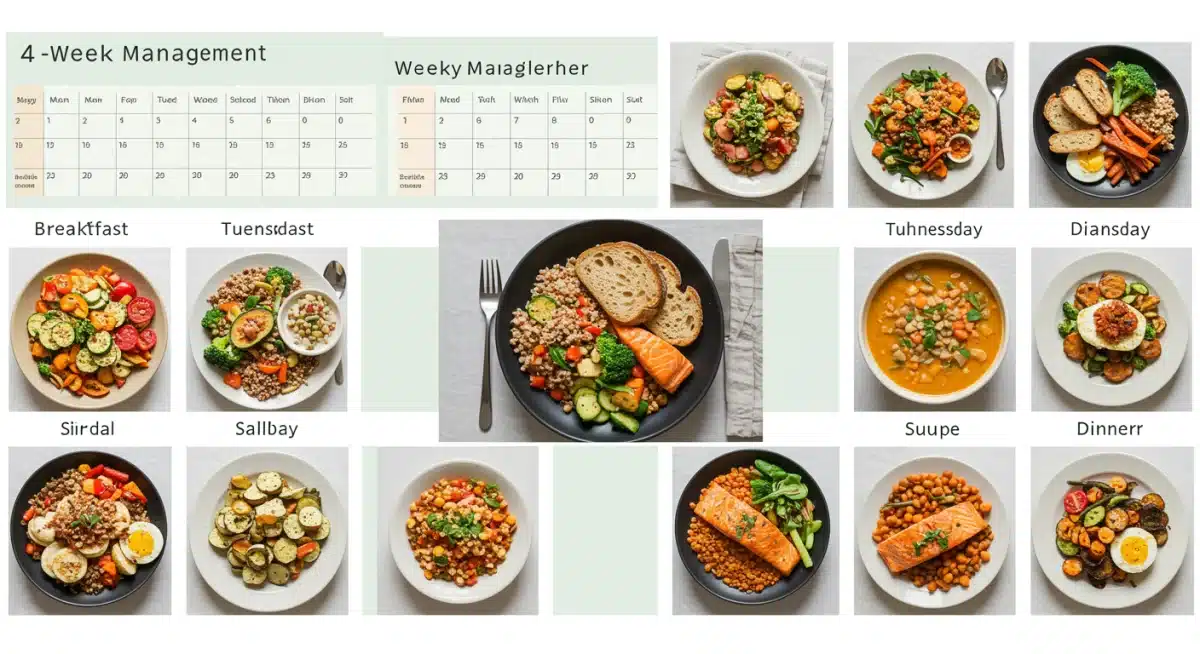
week 4: sustaining results and long-term planning
Congratulations on reaching week 4 of your batch cooking weight management journey! This final week is not an end, but rather a transition into making batch cooking a permanent, integral part of your lifestyle. The focus now shifts from establishing habits to refining them for long-term sustainability and continued success in your weight management goals.
Take stock of your progress. What challenges did you overcome? What successes did you celebrate? Use these insights to customize your batch cooking routine further. Consider creating a rotating menu of your favorite healthy batch-cooked meals to keep things exciting and efficient. This also helps in streamlining your grocery shopping and cooking process, as you’ll be familiar with the recipes and ingredients.
strategies for lasting batch cooking success
- Review and adapt: Regularly assess your meal plan and make adjustments based on your preferences and progress.
- Seasonal eating: Incorporate seasonal fruits and vegetables to keep meals fresh and cost-effective.
- Batch snack prep: Don’t forget to prep healthy snacks like chopped veggies with hummus, hard-boiled eggs, or fruit portions.
Think about how you can integrate batch cooking into your social life. Can you prepare healthy dishes to share with friends or family? This week solidifies your commitment to a healthier lifestyle, demonstrating that weight management isn’t about temporary fixes, but about adopting practical, enjoyable habits that support your well-being for years to come. You’ve built a powerful skill for sustainable health.
troubleshooting common batch cooking challenges
Even with the best intentions and a well-structured plan, you might encounter some hurdles during your batch cooking weight management journey. Recognizing and addressing these common challenges proactively can prevent them from derailing your progress and help you maintain consistency. It’s important to remember that setbacks are a normal part of any lifestyle change, and adaptability is key.
One frequent issue is meal fatigue or boredom from eating the same foods repeatedly. This can be mitigated by diversifying your recipe choices, experimenting with different spices and herbs, and even varying the presentation of your meals. Another common challenge is underestimating the time commitment; effective planning and efficient kitchen organization, as discussed earlier, are crucial for staying on schedule.
overcoming obstacles for consistent results
- Preventing food spoilage: Ensure proper storage, quick cooling, and appropriate container usage. Consider freezing portions for longer shelf life.
- Managing portion sizes: Re-evaluate your portioning tools and methods. If hunger persists, assess your macronutrient balance.
- Dealing with lack of motivation: Find an accountability partner, reward yourself for sticking to the plan, or rediscover new, exciting recipes to reignite enthusiasm.
Additionally, unexpected changes in your schedule can disrupt your batch cooking routine. Having a few go-to, quick-prep meal ideas or emergency frozen meals can be a lifesaver during such times. The ability to troubleshoot and adapt your approach will not only enhance your batch cooking skills but also strengthen your resilience, ensuring you stay committed to your weight management goals despite life’s unpredictable nature.
| Key Point | Brief Description |
|---|---|
| Strategic Planning | Plan meals, create shopping lists, and organize your kitchen for efficient prep work. |
| Variety & Nutrition | Expand recipes, use diverse ingredients, and balance macronutrients for sustained interest. |
| Portion Control | Consistently measure and monitor food intake to align with weight management goals. |
| Long-Term Sustainability | Adapt and refine your batch cooking routine to make it a lasting part of your healthy lifestyle. |
frequently asked questions about batch cooking for weight management
Most batch-cooked meals, when stored properly in airtight containers, can last for 3 to 4 days in the refrigerator. Certain items like cooked grains or roasted vegetables might last a bit longer, while seafood is best consumed within 2 days.
Absolutely! Freezing is an excellent way to extend the shelf life of many batch-cooked meals for up to 2-3 months. Soups, stews, casseroles, and cooked proteins like chicken or ground beef freeze particularly well. Ensure they are cooled completely before freezing.
Glass containers with airtight lids are highly recommended for batch cooking as they are durable, microwave-safe, oven-safe, and don’t absorb food odors or stains. BPA-free plastic containers are also an option, but glass is generally preferred for longevity and food safety.
To prevent sogginess, store sauces and dressings separately and add them just before eating. For flavor, use fresh herbs when reheating and consider cooking some components, like pasta, al dente so they don’t overcook when reheated. Proper cooling before storage is also key.
Yes, batch cooking is highly adaptable. Whether you’re vegetarian, vegan, gluten-free, or have other dietary needs, you can tailor your meal plans and recipes to suit your specific requirements. The core principles of planning and bulk preparation remain effective across various diets.
conclusion
The 4-week batch cooking plan for weight management presented here offers a robust and practical framework for anyone seeking sustainable results. By embracing the principles of thoughtful planning, diverse meal preparation, meticulous portion control, and continuous adaptation, individuals can transform their approach to healthy eating. This method not only simplifies the daily challenge of making nutritious choices but also instills valuable habits that extend far beyond the initial four weeks. Ultimately, batch cooking empowers you to take charge of your health, fostering a consistent and enjoyable path toward achieving and maintaining your weight management goals with confidence and ease.
